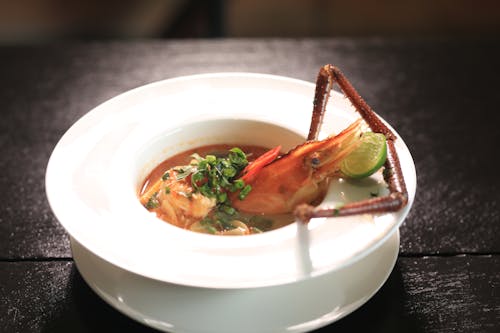A coastal journey to small crab stands offers a unique way to discover some of the most beautiful and remote places in the island nation.
When you reach the village of Haas, so small you could almost miss it, you’re nearly at your destination: the Craypot. The road to Aotearoa, the most remote village in New Zealand, winds 138 kilometers through the western lands of the South Island, densely populated with Jurassic forests. Canopies of ancient Mānuka trees and silver ferns rise so untouched that the distance to the nearest gas station slowly fades to the edge of your thoughts. Founded by German settlers in search of precious Pounamu jade, it’s another of the country’s most valuable resources that now attracts adventurers here, literally to the end of the road. As the road system of the Westland eventually ends and gives way to the wild terrain of the Westland, road trippers find sisters Dayna and Nicole Buchanan on the water’s edge in a red caravan, crab claws sizzling on the grill.

Growing up in New Zealand means growing up with crabs: clawless spiny rock lobsters, known as Crays when pulled from the waters of the Antipodes (not to be confused with the North American freshwater creatures of the same name). The sweet and salty meat beneath their spiky tails ranks among the island nation’s largest and most expensive exports, fetching hundreds of dollars per pound overseas. It’s a good reason to visit the source, where crabs are often an informal and everyday affair found on neighborhood bistro menus and thrown on backyard grills. Kiwis typically spend their summers barefoot, wandering between beach and bach (a lovingly named rundown summer home) to dive for crabs or leave pots in the water to pull them out. With few native land animals, the heart of the food system lies in seafood or Kaimoana, as the Māori call it, the original guardians of the land. And there’s no better way to explore the South Island than through the simple pleasures of its rugged coastal crab stands.
In the December summer, the smell of drying seaweed and garlic butter is carried on occasional breezes. Sitting at the picnic tables of the Craypot overlooking the Tasman Sea, it’s easy to believe that the Fiordland crested penguins outnumber the 200 residents here. “We haven’t let our remote location hinder us in any way. What should be our biggest obstacle, we take as our greatest advantage,” says Dayna. Despite state road closures that can cut off Jackson Bay from the rest of the country during weather events, the Buchanan sisters infuse this spirit into everything they do. The small space sets limits, and they’re the first to tell you they learned to cook on-site. Yet the results are the kind of simple magic you desperately want to find at the end of the world – sweet crabs, quickly steamed, with a touch of the grill and dressed with lemon and butter.

Crossing the Otago Valley, you’ll find the Fish Wife nestled on a gravelly point of land on the Moeraki coast. Here, the operation runs simply. Two hand-painted containers and seating made from metal crab traps testify to the generational connection of the Pile family to fishing. John Pile is a fourth-generation crab fisherman, and his partner Nicky cooks the crabs. They sell anything not valued high enough for export due to minor flaws like a broken antenna, allowing them to sell high-quality seafood cheaply to the public. It’s a path more and more fishermen are taking to provide Kaimoana for their communities and increase the sustainability of the industry.
This is the same mission that drives Claire Edwards of Tora Collective – supplying some of the country’s best restaurants. “What makes us unique and what we’re proudest of is our catch-to-order model,” explains Edwards. They fish only the exact number ordered each day, sending them from sea to doorstep by evening to preserve the marine environment. A key factor that makes crabs so special: “Our pristine marine environment, enriched by nutrient-rich currents directly from the Arctic, imparts an unparalleled taste found nowhere else.”

Edwards’ favorite location lies further north, all the way to Nin’s Bin, in Kaikōura. The town, whose name means “to eat crayfish” and hosts a 16-day Crayfest annually, has no shortage of crab stands, but none are as iconic as Nin’s Bin. The roadside cart, first parked by Johnny Clark’s grandfather in 1977 alongside a coastal road, is plain with a hand-painted sign advertising their catch (crayfish, whitebait!), equipped. Over the years, little has changed except for a new paint job every few decades. Load up a plate with a whole crab brushed with rich garlic butter, and leave room for a whitebait fritter (needle-sized immature fish, fried golden in batter). Both are best enjoyed on the beach while the sand finds its way into the folds of your clothing.
Just down the road from the Kaikōura seal colony is the Kaikōura BBQ Kiosk, where crabs are sold by weight. Choose yours from the fridge and bring it over for steaming and serving alongside a thick slice of crispy garlic bread. As your crab cooks, grab a cold beer or glass of wine from the nearest store and take a seat. “World Famous!” may hang above the kiosk, but as you wait for your paper plate of crab and enjoy the secluded, simple luxury atmosphere, you can’t help but wish it remains your little secret at the end of the world.











Discussion about this post